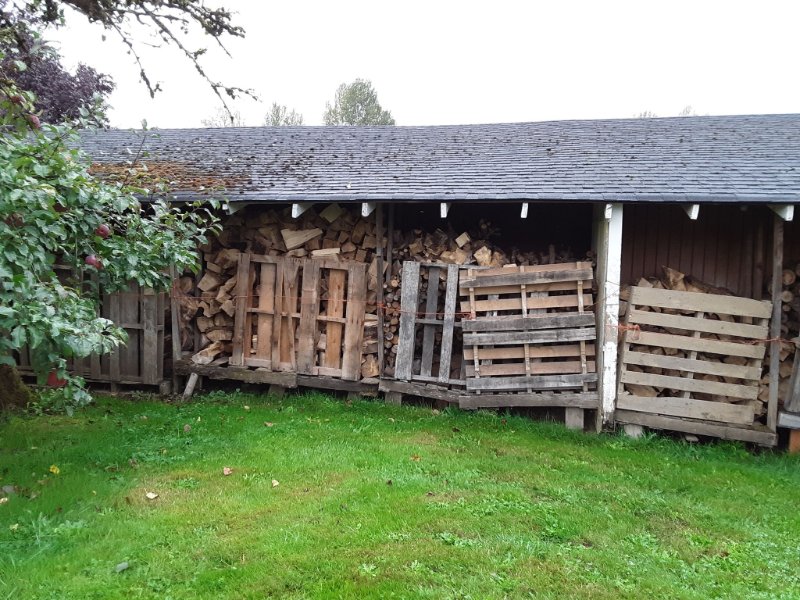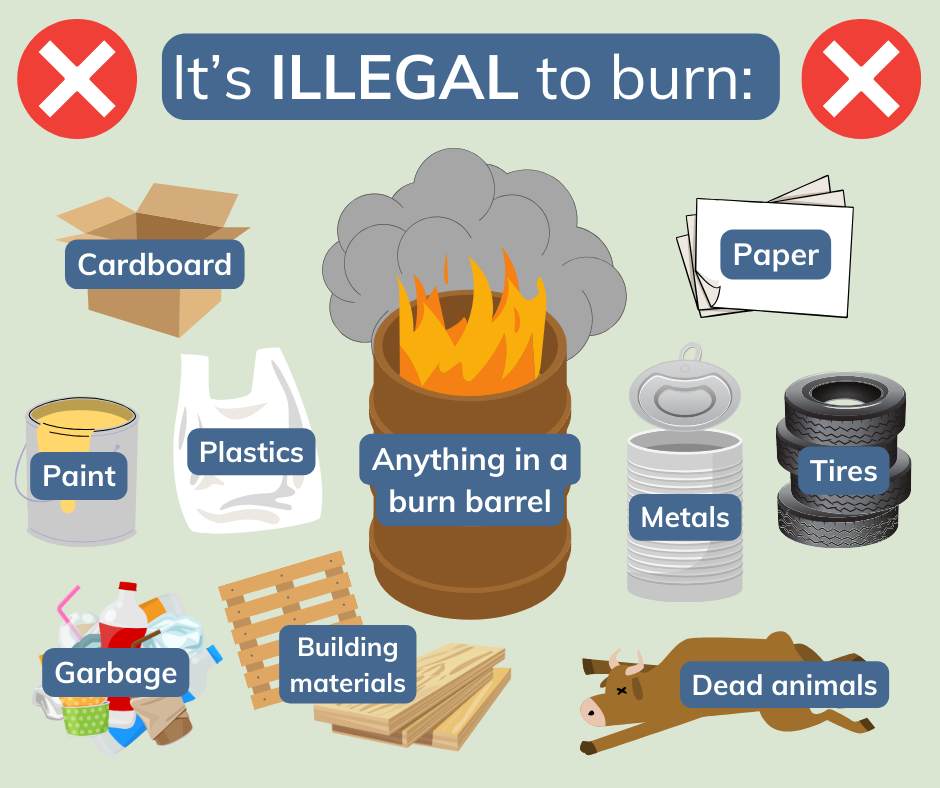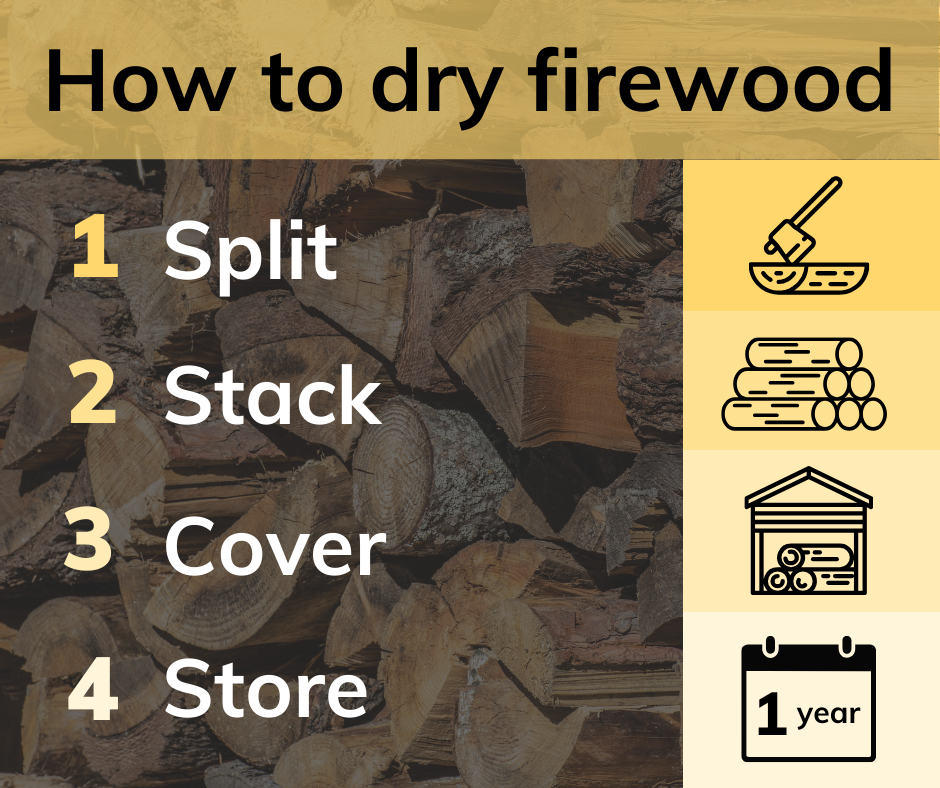
Store your firewood to keep it dry.
As the days grow warmer, let's make sure spring is the only thing in the air! This is a great time of year to manage yard waste responsibly, prepare firewood for next winter, and burn carefully before wildfire season.
Outdoor burning
Always check burn conditions before burning. Contact your local fire district or clean air agency, check for a burn ban, or sign up for email with the daily burn decision in your area: Central Washington or Eastern Washington.
Burning and urban growth areas
Do you live in an Urban Growth Area (UGA)? The location of your home impacts if and what you can burn.
If there is no burn ban and you live outside a UGA, you can burn yard and garden trimmings of dry, unprocessed, natural vegetation. The fire must adhere to the following specifications:
- Only 1 actively burning pile at a time
- No bigger than 4 feet wide x 3 feet high
- Kept a minimum of 50 feet from buildings
For all other outdoor burning, you must have a burn permit. Contact Ecology and your local fire district for more information.
If you live inside a UGA (and there is no burn ban), only recreational fires — barbecues and campfires — are allowed. Campfires must consist of dry, seasoned wood and be:
- 1 fire only
- 3 feet wide x 2 feet high
- At least 50 feet from structures
If your city has a burning ordinance, you must follow their burning restrictions as well. Remember — reducing outdoor burning isn't just neighborly, it also protects community health.
What can’t you burn?
Burning anything in a burn barrel, even yard waste, is illegal. Burning any other kind of garbage is also illegal. Most household waste can be recycled or composted. For agricultural or land clearing burns, you must have a burn permit.
For yard and garden trimmings:
- No burning in a recreational fire
- No burning inside a UGA
What are your other options?
Make your yard waste useful! Composting, mulching, or chipping yard waste returns nutrients to your garden or land. Or call 1‑800‑RECYCLE (1‑800‑732‑9253), Monday–Friday, 9 a.m.–3 p.m.
Properly seasoning firewood
Get ready now for next winter! Seasoning firewood takes time. To properly dry wood:
- Split
- Stack
- Cover
- Store
Drying times vary from at least 6 months (softwoods) to a year or more (hardwoods). Use a moisture meter to ensure the firewood is dry before burning. Check out EPA’s guide about how to properly season firewood.
Before using a wood stove or pellet stove, remember to check for a burn ban. A burn ban limits wood or pellet stove use, but does not apply to homes with no other source of heat.
Burn only dry, untreated wood or manufactured logs (follow product instructions). Paper can only be used to start a fire. Burning anything else in your stove is illegal.
Find out more about cleaner wood burning.



